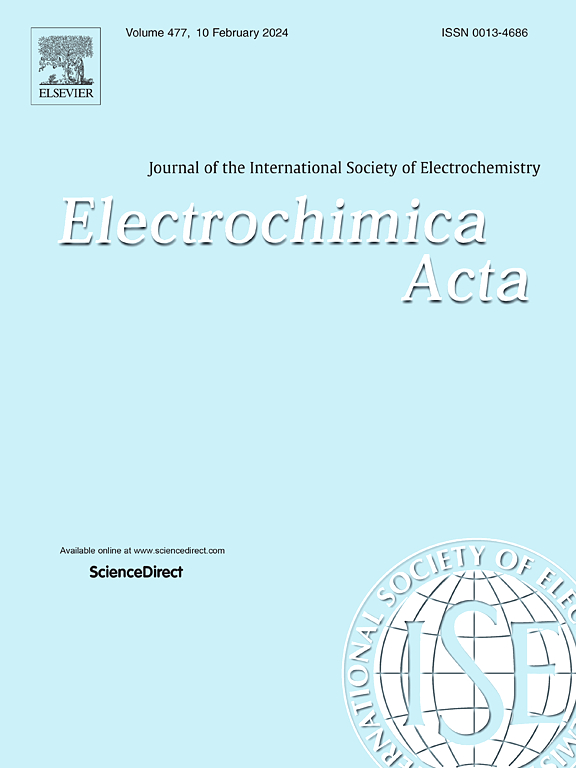超越电化学氮还原反应的催化剂设计:水可用性在电解质组成中的关键作用
IF 5.6
3区 材料科学
Q1 ELECTROCHEMISTRY
引用次数: 0
摘要
近几十年来,电化学氮还原反应(eNRR)由于其在温和条件下合成氨(NH₃)的潜力而引起了人们的关注。这种方法比传统的Haber-Bosch工艺更有优势,特别是在减轻其环境缺点方面。然而,法拉第效率和氨产率的数值还远远不够理想。文献中的大多数报告都在含水电解质中测试了几种不同的催化剂,其中水既是溶剂又是质子源。然而,这种方法有缺点,因为在水性电解质中,寄生反应(如析氢反应(HER))可以与eNRR竞争。因此,在本文中,我们总结了在电化学氮还原反应中,水的有效性在电解质组成中的关键作用以及它如何影响催化剂的性能。本文章由计算机程序翻译,如有差异,请以英文原文为准。

Beyond catalyst design for the electrochemical nitrogen reduction reaction: The crucial role of water availability in the electrolyte composition
The electrochemical nitrogen reduction reaction (eNRR) has attracted attention in recent decades due to its potential for ammonia (NH₃) synthesis at mild conditions. This approach offers advantages over the traditional Haber-Bosch process, particularly in terms of mitigating its environmental drawbacks. However, the values achieved for Faradaic efficiency and ammonia yield rates are still far from desirable. Most reports in the literature have tested several different catalysts in aqueous electrolytes, where water acts both as a solvent and a proton source. However, this approach has disadvantages, as in aqueous electrolytes, parasitic reactions such as the hydrogen evolution reaction (HER) can compete with eNRR. Thus, in this review, we summarize the crucial role of the water availability in the electrolyte composition during the electrochemical nitrogen reduction reaction and how it can affect the catalyst performance.
求助全文
通过发布文献求助,成功后即可免费获取论文全文。
去求助
来源期刊

Electrochimica Acta
工程技术-电化学
CiteScore
11.30
自引率
6.10%
发文量
1634
审稿时长
41 days
期刊介绍:
Electrochimica Acta is an international journal. It is intended for the publication of both original work and reviews in the field of electrochemistry. Electrochemistry should be interpreted to mean any of the research fields covered by the Divisions of the International Society of Electrochemistry listed below, as well as emerging scientific domains covered by ISE New Topics Committee.
 求助内容:
求助内容: 应助结果提醒方式:
应助结果提醒方式:


